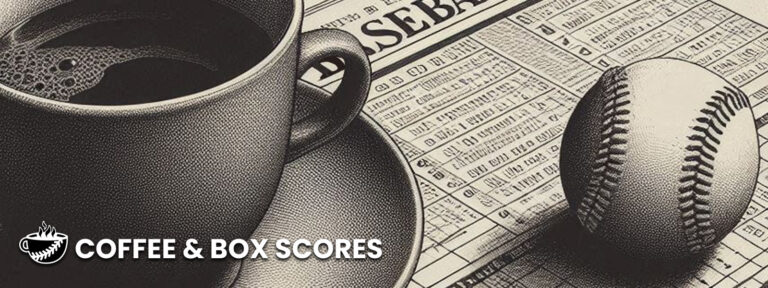In 1963, Dodgers southpaw Sandy Koufax fastballed and curved his way to a new level of dominance, an incandescent expression of mastery that saw him – over 311.0 innings – top the Majors in wins (25), strikeouts (306), ERA (1.88), shutouts (11) and K:BB ratio (5.28). The 306 whiffs were the most for a left-hander since 1904 and the 11 shutouts the most in the Majors since 1916. Like those two numbers that reached back into the long ago deadball era, the Cy Young and MVP winner also produced the first WHIP in the NL or AL below 0.900 since the “ball” era transitioned from dead to live. An .833 winning percentage (those 25 victories came with only five defeats) provided extra radiance to a beam that really hasn’t dimmed in the six decades since.
Mirroring Koufax, the next 14 hurlers to strap on at least 200.0 innings and duck below the 0.900 WHIP line made a habit of tipping the Win-Loss balance heavily in favor of the good. Starting with Koufax in ’63 and concluding with Justin Verlander and Gerrit Cole in 2019, the composite winning percentage for the group worked out to .771 (310-92), with the worst winning percentage among them Dave McNally’s .688 in 1968. Be really stingy with the baserunners allowed, pick up a win in better than two out of every three decisions – a formula that was borne out every time.
Until 2024.
And here, following this mini review, the curious circumstance of Logan Gilbert enters the previously unmarred frame. This past season, while posting a Major League-best 0.887 WHIP over a Major League-best 208.2 innings, the Mariners’ right-hander slunk to a .429 winning percentage (he was 9-12), a figure that ranked 68th out of the 88 pitchers this past season who made at least 25 starts. Gilbert’s lack of success is so out of line with what we’ve come to expect, it’s worth using his campaign to (perversely?) revel in the links to a far-gone brand of baseball.
In order to find another pitcher with at least 200.0 innings, a sub-0.900 WHIP and a losing record, a lot of years must be crossed off the list, launching us back to 1910 and Ed Walsh. Way back then, the White Sox right-hander – in spite of a league-best 1.27 ERA and a 0.820 WHIP that not only was the best in the AL-NL but also stands as the sixth lowest for any 200-inning pitcher between 1901 and 2024 – lost 20 while winning 18. Five years before Walsh’s losing campaign, Cy Young posted a 0.867 WHIP with an 18-19 record. And that’s it: among the 30 times since 1901 a hurler coupled 200.0+ innings with a WHIP below 0.900, Gilbert is paired with a pair of Hall of Famers as the only ones to complete their seasons with a losing record.
Beyond that association with the man who mounted more victories than any other pitcher ever (Young) and the one with the second lowest WHIP ever (min. 2,000.0 innings), Walsh, the Mariners’ All-Star, retains a notably dour place among the full collection. Within that group of 30 pitchers, Gilbert owns the lowest winning percentage in a season; recorded by far the fewest victories (after his nine, two pitchers – Clayton Kershaw in 2015 and Greg Maddux in 1994, won 16); and claims the worst ERA+, at 113 (Young in 1905 posted a 147 for the second worst).
Most every season will produce its share of quirky convergences, excuses to slip an active ballplayer into myriad currents from the past. These aren’t the readily apparent “modern master, meet the old gods” scenarios, like the ones authored by Shohei Ohtani or Aaron Judge in 2024. Instead, they spring from a striking confluence of numbers, somewhat hidden perhaps by the relative weakness of star power possessed by the current player. It’s both extraordinarily fun and enlightening to link Ohtani with Babe Ruth or Ty Cobb and Judge with Rogers Hornsby and Ted Williams; it can be equally compelling to explore how someone like Ezequiel Tovar or Gilbert can resurrect the past.
On its own, Gilbert’s baserunner parsimony makes for a great starting point – to produce such a low number in a crucial category and align himself with the likes of Christy Mathewson and Addie Joss, Juan Marichal and Pedro Martínez*, well, that’s worth a few hundred words. Throw in Gilbert’s Major League-leading tallies in innings and WHIP, and the company maintains its coolness.
1901-2024: 200.0+ IP, Sub-0.900 WHIP, Led the AL & NL in Both IP and WHIP
1913 Walter Johnson
1915 Pete Alexander
1965 Sandy Koufax
1994 Greg Maddux
2019 Justin Verlander
2024 Logan Gilbert
For all that, Gilbert’s meh showing in wins versus losses and run suppression adds a distinctive shading to his associations. In a season where he got lost in the shadows created by a pair of Triple Crown winners (Chris Sale and Tarik Skubal), a phenom in Pittsburgh (Paul Skenes) and others, his unique portfolio offers its own kind of illumination – not equal to the wattage or resonance of Koufax’s 1963, but of a dynamism all its own.
*For the curious, here are all the pitchers since 1901 to accumulate at least 200.0 innings and produce a WHIP below 0.900:
Cy Young, Christy Mathewson, Mordecai Brown, Ed Walsh, Sandy Koufax and Greg Maddux each did it twice.
These guys did it once – Addie Joss, Russ Ford, Walter Johnson, Dutch Leonard (the deadball era pitcher), Pete Alexander, Babe Adams, Juan Marichal, Luis Tiant, Dave McNally, Bob Gibson, Pedro Martínez, Jake Arrieta, Zack Greinke, Clayton Kershaw, Corey Kluber, Justin Verlander, Gerrit Cole and Logan Gilbert.
Thanks to Baseball Reference and its extraordinary research database, Stathead, for help in assembling this piece.

Roger Schlueter
As Sr. Editorial Director for Major League Baseball Productions from 2004-2015, Roger served as a hub for hundreds of hours of films, series, documentaries and features: as researcher, fact-checker, script doctor, and developer of ideas. The years at MLB Production gave him the ideal platform to pursue what galvanized him the most – the idea that so much of what takes place on the field during the MLB regular and postseason (and is forever beautifully condensed into a box score) has connections to what has come before. Unearthing and celebrating these webs allows baseball to thrive, for the present can come alive and also reignite the past.


